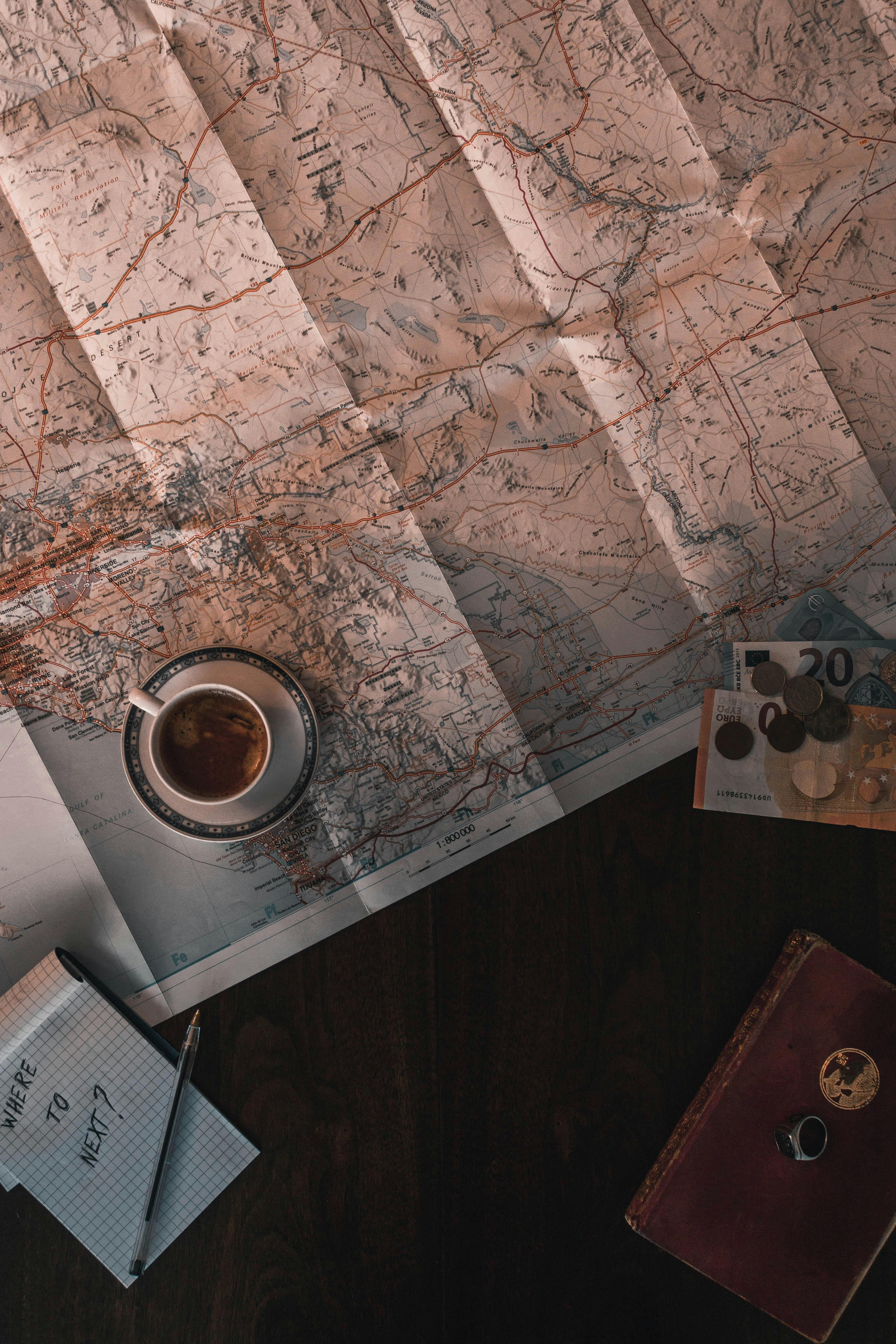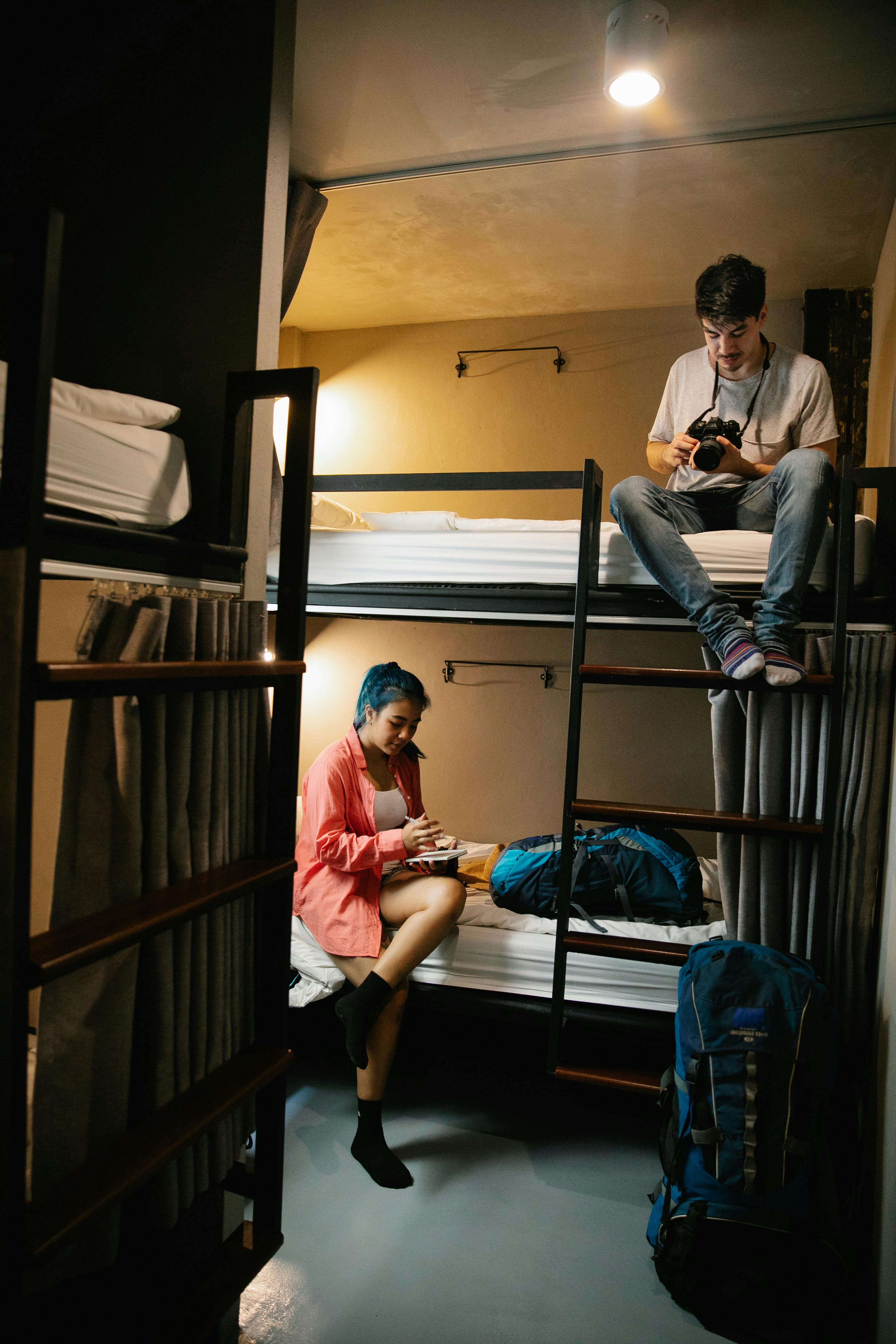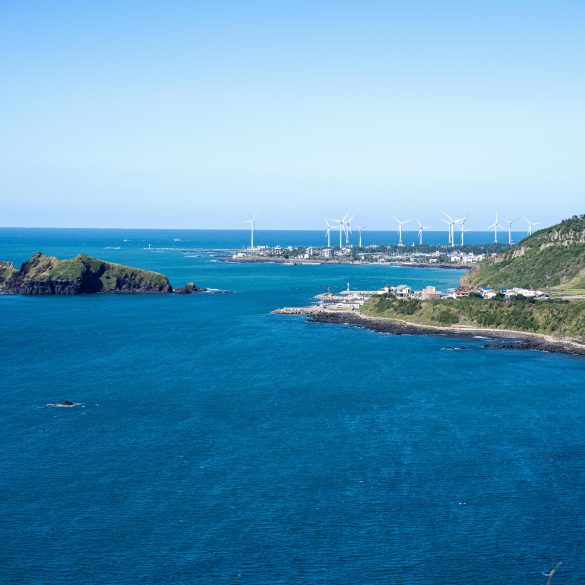Affordable Travel Planning: Strategy Guide for Smart, Memorable Trips
Let me start this off with a scene that used to play out for me every spring: Glancing at flight prices, my heart would drop—again. The thought, “Can I even afford to do this right now?” used to haunt my travel dreams. Back when I first started out (think, budget backpacker in Italy, 2009), I didn’t have a clue about efficient, affordable travel planning. Actually, let me clarify—what I thought was a clever way to get around Europe on a shoestring almost landed me in a hostel with bedbugs. That’s where the real learning kicked in. Since then, I’ve traveled to over 40 countries, advised major travel brands, and seen the tourism industry morph—pandemics, lockdowns, app revolutions, the whole nine yards.1 So if you’re here for strategies that actually work in 2025, not just recycled tips, welcome.
Why Affordable Travel Planning Still Matters More Than Ever
Here’s what really struck me during pandemic lockdowns: Travel didn’t disappear—it just changed shape. According to the UNWTO, international tourism plunged 73% in 2020—but in 2023 and 2024, smaller group travel and budget-conscious trips bounced back faster than luxury segments.2 Why is this important for you, right now? Most of us aren’t looking to splurge on five-star resorts. We want experiences, memories—the kind that don’t drain your life savings. Especially given inflation, volatile job markets, and shifting global costs, affordable travel planning isn’t just savvy. It’s absolutely crucial.
Quick Insight: 72% of travelers now prioritize cost efficiency over luxury—yet only 28% feel confident planning multi-country trips on a tight budget.3
Let me think about this for a moment: Why do most DIY travel plans go over-budget? Loads of reasons, but two really stand out: first, a total lack of strategy (just poking around flight deals until something looks cheap); second, misunderstanding what “value for money” actually means abroad. I know, I know—daydreaming about distant beaches is fun. Creating a trip plan that’s honest, achievable, and boosts your cultural experience? That’s a whole different beast.
First Steps: Defining Your Budget and Priorities
Funny thing is, people ask for “affordable travel tips” before they’ve defined what “affordable” actually means in their context. Are you thinking $40/day? $150/day? Are you solo, family, group? Is foodie culture top priority, or just chilling by the river? I’m partial to starting with a spreadsheet that covers not just flights and lodging, but also those little extras that trip you up—museum fees, transportation passes, SIM cards, the whole lot. What’s struck me over the years: It’s the unplanned expenses (luggage storage, snacks, taxi surcharges) that sneak up on your budget like a ninja.4
- Set a Realistic Daily Budget: Break down by meals, transportation, attractions.
- Identify Non-Negotiables: What experience is most important (culture, food, nature)?
- Account for Emergencies: Medical, missed flights, and lost items.
- Research Local Costs: Street food versus sit-down meals, local buses versus rideshares.
Did You Know?
In Thailand, local buses within cities cost less than $1 USD per ride, compared to $6-$8 for typical ridesharing—a difference that, over a week, adds up to nearly $50 saved for a single traveler.5 Which brings up a subtle but attractive point—sometimes, the “cheapest” way isn’t just pocket-friendlier; it’s more immersive.
Destination Research: Strategy for 2025
Ever notice how social media is loaded with “hidden gem” travel lists? Reality check—by the time your feed features that secret Greek village, so has everyone else’s. What truly matters in 2025 is knowing how to leverage up-to-date resources: data-backed travel reports, local blogs, government tourism pages.6 Last month (speaking of evolving travel habits), a client booked a three-week trip through Portugal and Spain purely on the advice of physiogeography maps pulled from EU statistics—a move that helped them miss the crowds, hit the budget sweet spot, and discover local festivals you won’t see on Instagram.
- Check Historical Price Trends: Use Google Flights, Hopper, or Skyscanner for airfare patterns.
- Read Local Reviews: Not just TripAdvisor or Booking, but region-specific blogger insights.
- Explore Government Tourism Pages: Hidden deals, off-peak event information.
- Study Popularity Curves: Which destinations are trending up or down? (Where Instagram crowds haven’t reached—yet.)
I’ve made the mistake (back in 2017) of relying only on major travel portals. The result? Crowds, overpriced everything. These days, I go straight to local expat forums, small business Instagrams, and verified government travel advisory sites.7
Smart Timing: Making the Most of Seasons and Events
Let me step back for a moment—timing is everything in affordable travel planning. Traveling off-peak (think fall in Europe, shoulder season in Southeast Asia) not only slashes costs but opens up authentic local moments. Conference conversations reveal that airline pricing algorithms have grown far more complex post-COVID; for instance, booking 6-8 weeks in advance now generally secures better deals than last-minute snags.8
Here’s a table that’s helped me countless times (and can work wonders on your next trip):
| Region | Best Travel Season | Expected Price Drop (%) | Unique Experiences |
|---|---|---|---|
| Western Europe | Late Sep – Early Nov | 15-30% | Harvest festivals, lower crowd levels |
| Southeast Asia | May, Sept | 20-35% | Local celebrations, lush scenery |
| South America | March, Nov | 10-28% | Fewer tourists, vibrant local culture |
| Northern Africa | Feb, Oct | 18-25% | Desert trips, lower rates |
Based on my experience (especially in Portugal’s Douro Valley, right after the harvest rush), even “rainy season” periods can be magical—plus, that’s where savings often lie, if you’re willing to adjust your plans. For groups, tracking local holidays to avoid peak hotel pricing is key.9
Key Takeaway: If your job or school schedule is flexible, set Google Calendar alerts six months in advance for off-peak flight searches.
I missed a $340 Paris-Vienna roundtrip by one week last year—never again.
Building Your Itinerary: Cost-Saving Methods that Actually Work
I’ll be completely honest—I used to wing my travel itineraries, thinking flexibility was key. Trouble is, spontaneous decisions can cost you dearly when you’re in busier cities or high-cost regions. Nowadays, my approach is more nuanced: plan high-cost activities (like museums in London or Machu Picchu hikes) for early in the trip, then mix in “cheat days” of walking tours or free events.10
- Map out public free-entry days for museums and galleries (most cities offer 1-2 per month).
- Cluster destinations geographically to reduce transportation costs.
- Download offline maps for self-guided walks—cutting down on tour costs.
- Blend “splurge” experiences (one gourmet meal, one bucket-list tour) into otherwise frugal days.
On second thought, there’s something I really need to stress: Pre-booking tickets (especially for top attractions) not only lowers costs but secures your spot in increasingly crowded venues. Some countries have recently doubled spot prices for walk-ins—because they can.11
Accommodation: Balancing Price and Experience
Conference chatter and client feedback tell me this: The debate between hotels versus Airbnbs is far from settled. Local guesthouses and boutique hostels are making a comeback post-pandemic, often with more flexible cancellation policies and bonus local knowledge.12 Sometimes, the “best deal” isn’t online at all—I’ve snared last-minute rooms from hostel blackboards (think Florence, 2014) for half the Booking.com price.
- Check for “third night free” deals on city hotel sites before defaulting to global search engines.
- Prioritize location over amenities—being central saves time and local transit costs.
- Always compare final price (with taxes/fees) before clicking “book.”
- Consider co-living or hostel work-for-stay programs for extended stays.
I go back and forth between self-catering apartments (handy in Scandinavia to dodge expensive dining costs) and host family stays for language/cultural immersion. From my perspective, over-optimizing for price can sometimes mean sacrificing safety or good sleep—a rookie mistake I painfully learned during a noisy Bangkok dorm night.13
Transportation Decisions: Local and Global
Let me get real for a second: Transportation is where budgets win or lose. Train travel (Europe, Japan, parts of India) often trumps buses for time-efficiency—and there are rail passes tailored for short tourist stays that save 30-80% on bookings.14 In places like Morocco or Vietnam, shared taxis or local buses not only drop costs but open up cultural conversations you won’t get behind tinted Uber windows.
Insider Fact: Japan’s JR Pass—only available to foreign tourists—covers unlimited nationwide rail for $250-$400 per week. But what many don’t know is that local bus companies offer tourist passes at $20-$40, making rural/urban exploration even more cost-effective than train-only routes.15
Funny how luggage can shape your whole trip: Small carry-ons often mean avoiding baggage fees and time lost at lost-and-found counters or storage lockers. Speaking of which, be sure to check for regional baggage policies—they can shift quickly, especially among low-cost airlines.16

Cultural Insider Tips & Local Experiences
Let me think about what truly makes travel memorable. It’s the local market mornings in Barcelona, the sunset folk music in Santorini, and the upward glance at Tokyo’s neon that you didn’t see featured in promotional brochures. What I’ve learned (often through trial and error): Ask small questions to locals—where do they eat, shop, unwind?17 A colleague once pointed out, “You can lose $200 on a tourist restaurant, or discover the best $5 noodle bowl in a back alley—your choice.” A bit blunt, but correct.
- Attend community festivals, not just major events—these are often low-cost or free.
- Trade time for experience: volunteer days, language exchanges, non-profit dinners are usually budget-friendly.
- Use local Facebook groups or Reddit for current event insights and recommendations.
I remember my first Spanish trip—venturing off the map, joining a “cena popular” in Madrid’s Lavapiés, learning more in one evening than a week’s worth of guidebook reading. There’s a subtle art to blending into local culture (without intruding or over-romanticizing it, which—let’s be honest—travel media tends to do). The learning curve? Steep, but worth every minute. The more I consider it, the more I realize that cultural humility is just as valuable as bargain-hunting.18
Sustainable and Responsible Travel Choices
Recently, sustainability has taken center stage: Conference panels echo this, and younger travelers demand it. But let’s admit, “greenwashing” is rampant. What’s genuinely effective for budget travelers? Opting for local, family-run accommodations, avoiding over-touristed destinations (especially at peak times), and being mindful of your environmental footprint.19
- Use refillable water bottles and avoid single-use plastics.
- Take public transit or walk/cycle where possible—cheaper, greener, more engaging.
- Support local artisans and small eateries over global chains.
- Respect cultural and natural sites; avoid actions that harm local communities.
Travel in 2025: Some countries now offer financial incentives, like eco-travel grants or discounts for visiting remote, under-touristed locations (Iceland, Scotland, Japan).
Check local tourism boards for applicant eligibility—you’d be surprised how many programs are available.20
Essential Planning Tools & Apps for 2025
The more digital the travel world becomes, the more essential it is to use apps that actually save time and money. Here’s the thing though—not all “top rated” apps work equally well everywhere.21 Last winter, in Prague, my favorite transport app lost signal in subways, while offline map alternatives kept me on track.
| Tool/App | Best Use | Potential Savings | 2025 Updates |
|---|---|---|---|
| Skyscanner | Flight and Hotel Comparison | 10-25% on flights | Real-time price alerts |
| Rome2Rio | Multi-modal transport mapping | 15-30% off train and bus | Expanded village/local routes |
| XE Currency | Real-time currency conversion | Avoid costly exchange errors | Offline rates now available |
| Google Translate | Quick translation/conversation | Saves on tour guide/interpreter costs | Local dialect support |
Oh, and here’s another thing: For trip planning and shared itineraries (families, friend groups), itinerary-sharing apps like TripIt and Splitwise now feature live update functions and currency conversion—massive upgrades over last year.22
Safety, Accessibility, and Health Strategies
I remember when this first clicked for me: Cheap trips that cut corners on safety were hardly worth the risk or anxiety. Post-pandemic, travel insurance and country-specific health apps (especially for allergy/dietary issues) are essential for peace of mind. Another learning moment—double-checking accessibility for mobility aids, gluten-free diets, etc., can prevent stressful situations.23
- Always verify emergency contact procedures before departure.
- Choose travel insurance with clear cancellation, health, and evacuation coverage.
- Use accessibility filter options for hotels and transit (most booking sites now have these).
- Download local safety alert apps for weather, protests, or travel disruptions.
I need to revise my earlier point about “go anywhere, do anything”—nowadays, it pays to plan accessibility ahead. In 2024, a close friend had to reroute an entire trip because a supposedly “accessible” train station in Budapest wasn’t wheelchair-friendly. Learning: Verify with locals, not just official websites.24
Real-Life Travel Case Studies
What really strikes me is how every trip teaches something new. I remember my client’s Southeast Asia family tour last year—three weeks with two teenagers, prioritized flexible food options and local homestays. Total cost? 20% less than their Italy trip the year before, with richer experiences and happier kids.25
On the other hand, a colleague’s solo South America job search took an unexpected turn: By using local WhatsApp job boards (recommended in community groups), he saved hundreds on rent and discovered a volunteer position that became a paid gig. This kind of adaptability is—more or less—the mark of a true budget traveler.
Action Step: Before finalizing any itinerary, join local digital groups (Reddit, Facebook, WhatsApp)—these communities consistently highlight timely discounts, safety alerts, and cultural events.
Actionable Takeaways for Memorable, Affordable Travel in 2025
- Never underestimate the power of local knowledge—connect, listen, adapt.
- Prioritize timing and flexibility over generic “cheapest flights.”
- Mix structured planning with adventurous improvisation.
- Invest in experiences, not just cost-reduction—true value is found in the stories and moments you create.
- Update your planning tools and habits annually to match destination shifts and global trends.
Before we wrap up, let me confess—I still have travel anxieties and plenty of logistical nightmares. But what’s changed is my comfort with uncertainty: These days, smart preparation leaves room for surprise.
References



